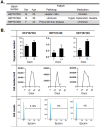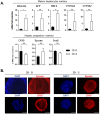Expansion of human primary hepatocytes in vitro through their amplification as liver progenitors in a 3D organoid system
- PMID: 29844473
- PMCID: PMC5974235
- DOI: 10.1038/s41598-018-26584-1
Expansion of human primary hepatocytes in vitro through their amplification as liver progenitors in a 3D organoid system
Abstract
Despite decades of investigation on the proliferation of adult human primary hepatocytes, their expansion in vitro still remains challenging. To later be able to consider hepatocytes as a cell therapy alternative or bridge to liver transplantation, dramatically impeded by a shortage in liver donors, the first step is having an almost unlimited source of these cells. The banking of transplantable hepatocytes also implies a protocol for their expansion that can be compatible with large-scale production. We show that adult human primary hepatocytes when grown in 3D organoids are easily amplified, providing a substantial source of functional hepatocytes ready for transplantation. Following their plating, differentiated human hepatocytes are amplified during a transient and reversible step as liver progenitors, and can subsequently be converted back to mature differentiated hepatocytes. The protocol we propose is not only compatible with automated and high-throughput cell culture systems, thanks to the expansion of hepatocytes in suspension, but also guarantees the generation of a high number of functional cells from the same patient sample, with a relatively easy set up.
Conflict of interest statement
The authors declare no competing interests.
Figures





References
Publication types
MeSH terms
Substances
LinkOut - more resources
Full Text Sources
Other Literature Sources
Medical

